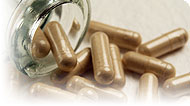health guides
Selenium

How to Use It
While the Recommended Dietary Allowance for most adults is 55 mcg per day, an adult intake of 100–200 mcg of selenium per day is recommended by many doctors.
Where to Find It
Brazil nuts are the best source of selenium. Yeast, whole grains, and seafood are also good sources. Animal studies have found that selenium from yeast is better absorbed than selenium in the form of selenite.1
Possible Deficiencies
While most people probably don’t take in enough selenium, gross deficiencies are rare in Western countries. Soils in some areas are selenium-deficient and people who eat foods grown primarily on selenium-poor soils are at risk for deficiency. People with AIDS have been reported to be depleted in selenium.2 Similarly, limited research has reported an association between heart disease and depleted levels of selenium.3 People who are deficient in selenium have an increased risk of developing certain types of rheumatoid arthritis.4
Copyright © 2024 TraceGains, Inc. All rights reserved.
Learn more about TraceGains, the company.
The information presented by TraceGains is for informational purposes only. It is based on scientific studies (human, animal, or in vitro), clinical experience, or traditional usage as cited in each article. The results reported may not necessarily occur in all individuals. Self-treatment is not recommended for life-threatening conditions that require medical treatment under a doctor's care. For many of the conditions discussed, treatment with prescription or over the counter medication is also available. Consult your doctor, practitioner, and/or pharmacist for any health problem and before using any supplements or before making any changes in prescribed medications. Information expires December 2024.


 We are proud to announce that
We are proud to announce that  As the market evolves, customers increasingly request a wider variety of omega-3 options for their lipid...
As the market evolves, customers increasingly request a wider variety of omega-3 options for their lipid...  Maintaining healthy glucose levels is crucial for preventing metabolic conditions like diabetes,...
Maintaining healthy glucose levels is crucial for preventing metabolic conditions like diabetes,...  Looking at formulating a new vitamin blend? Discover
Looking at formulating a new vitamin blend? Discover 







































